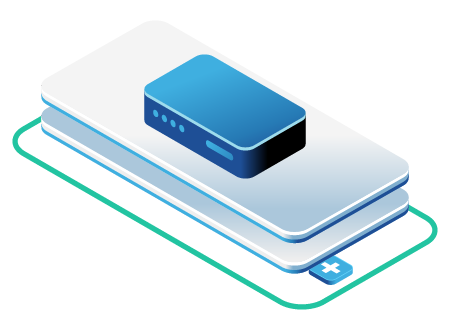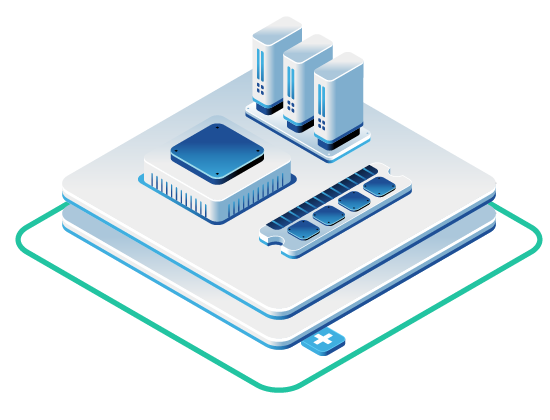In this article
- The Hardware: OpenMetal Large V4 Specifications
- Benchmark 1: General Compute & Virtualization Density
- Benchmark 2: AI Inference Without the GPU Tax (Intel AMX)
- Benchmark 3: Database Throughput (RocksDB & ClickHouse)
- Benchmark 4: Confidential Computing with Minimal Overhead (Intel TDX)
- The Verdict: Density Drives ROI
We’ve moved past just “Cloud Exit”, now it’s about “Cloud Density”. For CTOs and infrastructure leaders, raw speed isn’t the only goal anymore. It’s about workload consolidation. The math is simple: run more work on fewer servers to get the best TCO.
With OpenMetal’s V4 Bare Metal servers, powered by 5th Gen Intel® Xeon® Scalable processors (formerly Emerald Rapids), the equation for high-density virtualization and AI inference has changed.
Here is a breakdown of what 5th Gen Xeon brings to the private cloud data center.
The Hardware: OpenMetal Large V4 Specifications
 To benchmark performance, we use our production-grade Large V4 Bare Metal Server, built specifically for high-performance private clouds and storage clusters.
To benchmark performance, we use our production-grade Large V4 Bare Metal Server, built specifically for high-performance private clouds and storage clusters.
- Processors: 2x Intel® Xeon® Silver 4510 (12 Cores / 24 Threads each)
- Total Core Density: 24 Physical Cores / 48 Threads
- Memory: 256GB DDR5-5600 MT/s (a major bandwidth jump vs Gen 4)
- I/O: PCIe Gen 5.0 (Double the bandwidth of Gen 4)
- Storage: Micron 7450/7500 MAX NVMe (PCIe 4.0/5.0 ready)
For a full breakdown of the architecture, check out the OpenMetal 5th Gen Platform Page.
Benchmark 1: General Compute and Virtualization Density
For platform engineers moving away from legacy environments or tuning OpenStack clusters, performance per watt is the key metric. You want to run more VMs on fewer physical servers to cut licensing costs (like Red Hat or Microsoft Server per-core pricing).
According to Phoronix benchmarks, the 5th Gen Intel Xeon Scalable processors deliver a ~21% average performance gain for general compute workloads compared to the previous generation, all within the same power envelope.
What this means for your private cloud:
- Higher Consolidation Ratio: You can safely over-provision vCPUs at a higher ratio (e.g., 6:1) without causing “noisy neighbor” latency. This is thanks to the larger L3 cache (up to 3x larger in some SKUs vs previous generations).
- Lower License TCO: By packing workloads onto 5th Gen hardware, you reduce the physical node count needed to run the same number of VMs. Fewer nodes means lower software licensing fees.
Benchmark 2: AI Inference Without the GPU Tax (Intel AMX)
“AI Everywhere” is the trend, but not every inference task needs a scarce, expensive H100 GPU.
The 5th Gen Xeon features Intel® Advanced Matrix Extensions (AMX), a built-in accelerator that handles matrix multiplication operations—the foundation of deep learning—far more efficiently than standard AVX-512 instructions.
The Data:
- Inference Speed: Intel reports that 5th Gen Xeon processors show up to 14x higher inference performance compared to 3rd Gen Intel Xeon processors.
- Latency: For “nimble” LLMs (<20B parameters), AMX keeps latency under 100ms. This meets real-time SLA needs for chatbots and RAG (Retrieval-Augmented Generation) apps.
By using OpenMetal’s Gen 5 servers, you can deploy inference nodes at a fraction of the cost of dedicated GPU clusters.
Benchmark 3: Database Throughput (RocksDB & ClickHouse)
Data-heavy apps are often slowed down not by the CPU, but by how fast data moves between memory and storage. The shift to DDR5 memory and PCIe Gen 5.0 removes these bottlenecks.
- PCIe 5.0: Offers 80 lanes of connectivity with 2x the throughput of PCIe 4.0. This matters for Ceph storage clusters where NVMe speeds define your performance.
- DDR5-5600: Provides a massive bandwidth increase for in-memory databases like Redis or Memcached.
Benchmarks show that using built-in accelerators like Intel® In-Memory Analytics Accelerator (IAA) can boost RocksDB performance by up to 3.7x compared to software-only compression. That is a huge advantage for modern data lakes.
Benchmark 4: Confidential Computing with Minimal Overhead (Intel TDX)
For industries like healthcare, fintech, and blockchain, density is worthless if the data isn’t secure. 5th Gen Xeon introduces Intel® Trust Domain Extensions (TDX), which isolates virtual machines (Trust Domains) from the hypervisor and other VMs at the hardware level.
Historically, hardware encryption came with a steep learning curve and performance tax. TDX changes the game by allowing you to “lift and shift” existing applications into encrypted enclaves without code changes.
The Data:
According to our own TDX performance benchmarks on bare metal, enabling TDX incurs a negligible performance penalty of often less than 2-4% for standard workloads. This means you can achieve confidential computing compliance without sacrificing the high-density benefits of the hardware.
The Verdict: Density Drives ROI
Upgrading to 5th Gen Intel Xeon is about more than just raw speed, but efficiency.
- Reduce Footprint: Run the same workload on fewer servers with better performance per watt.
- Eliminate GPUs: Handle AI inference on the CPU with AMX.
- Future-Proof I/O: Saturation-proof your storage with PCIe 5.0.
Secure the Stack: Encrypt data in use with TDX without killing performance.
If you are planning a high-density private cloud deployment, the math favors Gen 5. Configure your Gen 5 Cloud Core today and see the advantages for yourself!
Schedule a Consultation
Get a deeper assessment and discuss your unique requirements.
Read More on the OpenMetal Blog


































